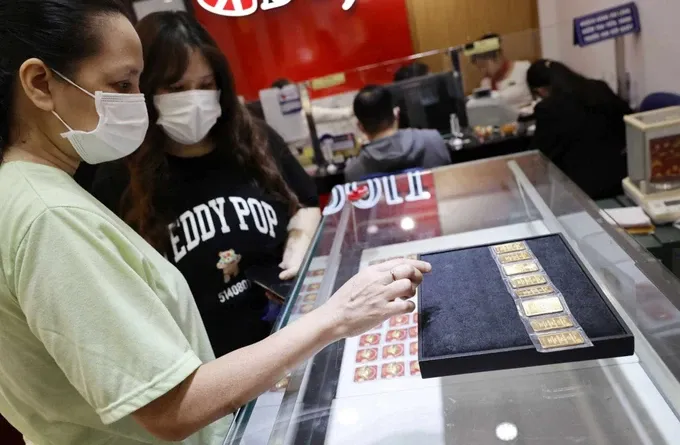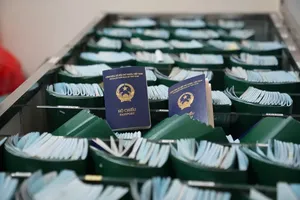
Since the news that the State Bank of Vietnam is going to host gold auction sessions, the prices of gold in the country have not seen many significant changes.
In Hanoi, for instance, PNJ Co. yesterday announced a rise of VND400,000 (US$15.75) in both buying and selling, at VND82.1 million ($3,232) and VND84.1 million ($3,310) per tael respectively. Gold rings experienced a price drop, however, to VND75.07 million ($2,955) for buying and VND76.77 million ($3,022) per tael correspondingly.
In HCMC, business activities in famous streets for gold trading like Nguyen Duy Duong, An Duong Vuong are rather slow. The number of customers coming to the main store of SJC Co. was a bit more crowded. Doji Gold and Jewelry Center announced that 9999 gold rings were out of stock and only sold gold jewelry, SJC gold bars. After various fluctuations during the day, the ending prices for SJC gold bars were at VND81.5 million ($3,208) for buying and VND83.3 million ($3,279) for selling.
In the world, gold prices on the Kitco trading platform yesterday afternoon (Vietnamese timezone) were at $2.387,6 per ounce, a rise of $26 USD/ounce compared to the day before. This is equal to VND72.9 million ($2,870) per tael, meaning a gap of VND11.2 million ($441) VND3.9 million ($154) compared with SJC gold bar and gold ring, respectively.
Assoc. Prof. Dr. Ngo Tri Long, former Deputy Director of the Institute of Price Market Management Research (Ministry of Finance), said that the domestic gold market cannot cool down immediately after the news, but might even see a reserve effect since more physical gold supply via auction could cause various negative consequences.
“There is no exact estimation on the true gold demand in the community. More gold released into the market means a rush of people buying gold to store or speculate. This might mean a repetition of the preference to keep gold or use it as a currency among citizens a long time ago, which is not at all positive to the national economy”, stressed Dr. Long.
Prof. Tran Tho Dat, Chairman of the Science and Training Council (the National Economics University) shared that gold auctions are just a short-term solution because Vietnam's gold reserve currently accounts for about 0.68 percent of its total foreign exchange reserves. Therefore, a successful auction can only provide 2-3 tonnes of gold and the gold reserve decreases to its minimum, at 0.5 percent. Yet the real need of the market now is 40 tonnes per year.
On the bright side, the released amount can somehow lessen the imbalance between supply – demand. In the future, there should be a mechanism to grant import quota so that gold trading businesses have sufficient material for manufacturing and trading.
According to CEO Nguyen Minh Tuan of AFA Capital, who took part in several gold auction sessions in 2013, the State Bank of Vietnam should consider the problem of exchange rate. To import gold needs USD, meaning a drop in foreign exchange reserve and in turn a rise in exchange rate. That is why there have been continuous exchange rate increases lately after the news of gold auction.
Dr. Can Van Luc, member of the National Advisory Council for Monetary Policies, commented that the Vietnam State Bank should not use its foreign exchange reserve to import gold. Instead, it is more advisable to mobilize money from social resources for this import to minimize unwanted influences on the exchange rate.
The State Bank of Vietnam yesterday announced its VND/USD exchange rate at VND24,231 per dollar, an increase of VND90. Commercial banks are allowed to trade at a margin of +/-5 percent, equal to the floor and ceiling prices of VND23,019/USD and 25,443/USD respectively. Since the beginning of this year, this exchange rate has risen by VND1,000/USD or 4.2 percent.












)

)









